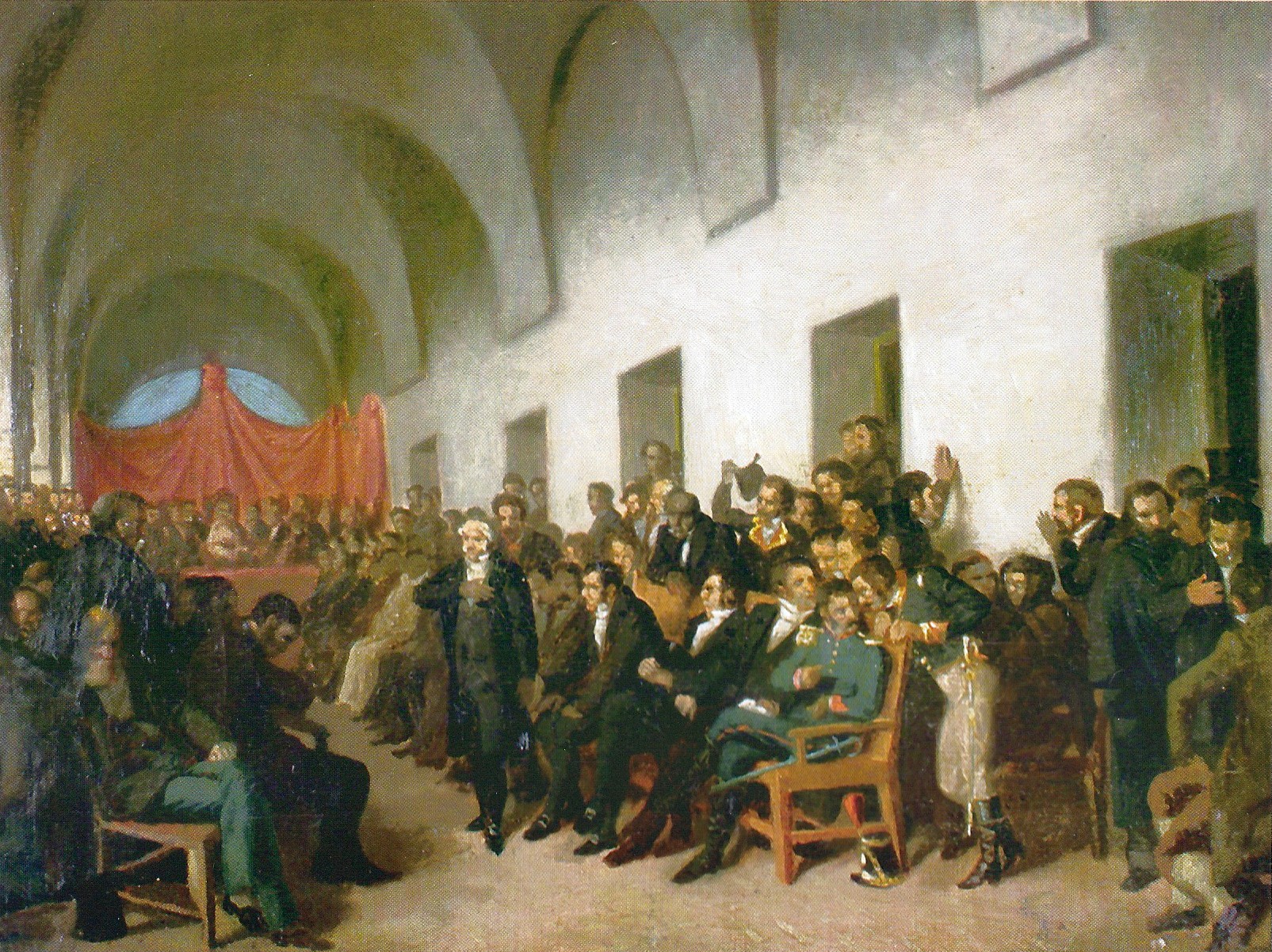|
Juan Vázquez De Coronado
Juan Vázquez de Coronado y Anaya (; 1523–1565) was a Spanish conquistador, remembered especially for his role in the colonization of Costa Rica, in Central America, where he gained a reputation for fairness, effective administration, and good relationships with the native population. He was a nephew of Francisco Vázquez de Coronado y Luján, who explored the southwestern United States between 1540 and 1542. By a decree given at Aranjuez by King Philip II of Spain on 8 April 1565, Juan Vásquez de Coronado was appointed as the first royal governor and first ''Adelantado'' (a hereditary title) of the province of Costa Rica, but his ship disappeared in a storm off the coast of southern Spain while he was on his way to receive his appointments from the monarch. He was married to Isabel, a niece of Pedro Arias Dávila, the principal conqueror of Panama. The Vázquez de Coronado Canton, one of the administrative divisions of the Province of San José, in the Republic Costa Rica, ... [...More Info...] [...Related Items...] OR: [Wikipedia] [Google] [Baidu] |
Adelantado
''Adelantado'' (, , ; meaning 'advanced') was a title held by some Spain, Spanish nobles in service of their respective kings during the Middle Ages. It was later used as a military title held by some Spanish ''conquistadores'' of the 15th, 16th and 17th centuries. ''Adelantados'' were charter, granted directly by the monarch the right to become governors and judge, justices of a specific region, which they were charged with conquering, in exchange for funding and organizing the initial explorations, settlements and pacification of the target area on behalf of the Crown of Castile. These areas were usually outside the jurisdiction of an existing ''Audiencia Real, audiencia'' or viceroy, and ''adelantados'' were authorized to communicate directly with the Council of the Indies. The ''reconquista'' The term has its origins in the ''reconquista'' and comes from the phrase ''por adelantado'' (Spanish language, Spanish: 'in advance', although translations stating 'one who goes before' ... [...More Info...] [...Related Items...] OR: [Wikipedia] [Google] [Baidu] |
Audiencia Real
A ''Real Audiencia'' (), or simply an ''Audiencia'' (), was an appellate court in Spain and its empire. The name of the institution literally translates as Royal Audience. The additional designation ''chancillería'' (or ''cancillería'', Catalan: ''cancelleria'', English: '' chancellery'') was applied to the appellate courts in early modern Spain.Elliot, ''Imperial Spain'', 86. Each ''audiencia'' had '' oidores'' (Spanish: judges, literally, "hearers"). ''Audiencias'' in Spain The first ''audiencia'' was founded in the Kingdom of Castile in 1371 at Valladolid. The Valladolid Audiencia functioned as the highest court in Castile for the next two centuries. Appeals from the Castilian ''audiencias'' could only be made to the Council of Castile after its creation in 1480. After the union of the crowns of Castile and Aragon in the Kingdom of Spain and the subsequent conquest of Granada in 1492, the ''audiencia'' was divided in two, with the Audiencia of Valladolid taking cases ori ... [...More Info...] [...Related Items...] OR: [Wikipedia] [Google] [Baidu] |
El Salvador
El Salvador, officially the Republic of El Salvador, is a country in Central America. It is bordered on the northeast by Honduras, on the northwest by Guatemala, and on the south by the Pacific Ocean. El Salvador's capital and largest city is San Salvador. The country's population in 2024 was estimated to be 6 million according to a government census. Among the Mesoamerican nations that historically controlled the region are the Maya peoples, Maya, and then the Cuzcatlan, Cuzcatlecs. Archaeological monuments also suggest an early Olmec presence around the first millennium BC. In the beginning of the 16th century, the Spanish conquest of El Salvador, Spanish Empire conquered the Central American territory, incorporating it into the Viceroyalty of New Spain ruled from Mexico City. However, the Viceroyalty of New Spain had little to no influence in the daily affairs of the isthmus, which was colonized in 1524. In 1609, the area was declared the Captaincy General of Guatemala by the ... [...More Info...] [...Related Items...] OR: [Wikipedia] [Google] [Baidu] |
New Spain
New Spain, officially the Viceroyalty of New Spain ( ; Nahuatl: ''Yankwik Kaxtillan Birreiyotl''), originally the Kingdom of New Spain, was an integral territorial entity of the Spanish Empire, established by Habsburg Spain. It was one of several domains established during the Spanish colonization of the Americas, Spanish conquest of the Americas, and had its capital in Mexico City. Its jurisdiction comprised a large area of the southern and western portions of North America, mainly what became Mexico and the Southwestern United States, but also California, Florida and Louisiana (New Spain), Louisiana; Central America as Mexico, the Caribbean like Hispaniola and Martinique, Martinica, and northern parts of South America, even Colombia; several Pacific archipelagos, including the Philippines and Guam. Additional Asian colonies included "Spanish Formosa", on the island of Taiwan. After the 1521 Spanish conquest of the Aztec Empire, conqueror Hernán Cortés named the territory New S ... [...More Info...] [...Related Items...] OR: [Wikipedia] [Google] [Baidu] |
Guatemala City
Guatemala City (, also known colloquially by the nickname Guate), is the Capital city, national capital and largest city of the Guatemala, Republic of Guatemala. It is also the Municipalities of Guatemala, municipal capital of the Guatemala Department and the most populous urban metropolitan area in Central America. The city is located in a mountain valley called Valle de la Ermita () in the south-central part of the country. Guatemala City is the site of the native Maya civilization, Mayan city of Kaminaljuyu in Mesoamerica, which was occupied primarily between 1500 BCE and 1200 CE. The present city was founded by the Spanish after their colonial capital, now called Antigua Guatemala, was destroyed by the devastating 1773 Guatemala earthquake, 1773 Santa Marta earthquake and its aftershocks. It became the third royal capital of the surrounding Captaincy General of Guatemala; which itself was part of the larger Viceroyalty of New Spain in imperial Spanish America and remained und ... [...More Info...] [...Related Items...] OR: [Wikipedia] [Google] [Baidu] |
Alcalde
''Alcalde'' (; ) is the traditional Spanish municipal magistrate, who had both judicial and Administration (government), administrative functions. An ''alcalde'' was, in the absence of a corregidor (position), corregidor, the presiding officer of the Crown of Castile, Castilian ''Cabildo (council), cabildo'' (the municipal council) and judge of first instance of a town. ''Alcaldes'' were elected annually, without the right to reelection for two or three years, by the ''regidores'' (council members) of the municipal council. The office of the ''alcalde'' was signified by a staff of office, which they were to take with them when doing their business. A woman who holds the office is termed an ''alcaldesa''. In New Spain (Mexico), ''alcaldes mayores'' were chief administrators in colonial-era administrative territories termed ''alcaldías mayores''; in colonial-era Peru the units were called ''corregimientos''. ''Alcalde'' was also a title given to Indigenous peoples of the America ... [...More Info...] [...Related Items...] OR: [Wikipedia] [Google] [Baidu] |
Antigua Guatemala
Antigua Guatemala (), commonly known as Antigua or La Antigua, is a city in the Guatemalan Highlands, central highlands of Guatemala. The city was the capital of the Captaincy General of Guatemala from 1543 through 1773, with much of its Baroque-influenced architecture and layout dating from that period. These characteristics had it designated as a UNESCO World Heritage Site in 1979. Antigua Guatemala serves as the capital of the homonymous municipality and the Sacatepéquez Department. Population The city had a peak population of some 65,000 in the 1770s; the bulk of the population moved away in the late 18th century after the 1773 Guatemala earthquake. Despite significant population growth in the late 20th century, the city had only reached half that number by the 1990s. At the time of the 2007 census, the city had 34,685 inhabitants. History ''Antigua Guatemala'' means "Old Guatemala" and was the third capital of Guatemala, formerly called "Santiago de los Caballeros ... [...More Info...] [...Related Items...] OR: [Wikipedia] [Google] [Baidu] |
Cabildo (council)
A cabildo () or ayuntamiento () was a Spanish Empire, Spanish colonial and early postcolonial administrative council that governed a municipality. Cabildos were sometimes appointed, sometimes elected, but were considered to be representative of all land-owning heads of medieval household, household (''vecinos''). The colonial cabildo was essentially the same as the one that was developed in Middle Ages, medieval Crown of Castile, Castile. The word ''cabildo'' has the same Latin root (''capitulum'') as the English word wiktionary:chapter, chapter and in fact is also the Spanish word for a cathedral chapter. Historically, the term ''ayuntamiento'' was often preceded by the word ''excelentísimo'' (English language, English: "most excellent") as a style (manner of address), style of office in referring to the council. That phrase is often abbreviated ''Exc.mo Ay.to'' History The Castilian cabildo has some similarities to the ancient Roman ''municipium'' and ''civitas'', especial ... [...More Info...] [...Related Items...] OR: [Wikipedia] [Google] [Baidu] |
Second-in-command
Second-in-command (2i/c or 2IC) is a title denoting that the holder of the title is the second-highest authority within a certain organisation. Usage In the British Army or Royal Marines, the second-in-command is the deputy commander of a unit, from battalion or regiment downwards. This terminology is also used in many other Commonwealth armies and other nations. The equivalent appointment in the United States Army is the executive officer. The second-in-command of a battalion or regiment is usually a major. The second-in-command of a company, squadron, or artillery battery (in which they are called the battery captain) is usually a captain (although infantry company second-in-commands were usually lieutenants until after the Second World War), the second-in-command of a platoon or troop is the platoon or troop sergeant, and the second-in-command of a section is usually a lance corporal. In the Royal Navy and Commonwealth navies, the second-in-command of a vessel, regardle ... [...More Info...] [...Related Items...] OR: [Wikipedia] [Google] [Baidu] |
Guatemala
Guatemala, officially the Republic of Guatemala, is a country in Central America. It is bordered to the north and west by Mexico, to the northeast by Belize, to the east by Honduras, and to the southeast by El Salvador. It is hydrologically bordered to the south by the Pacific Ocean and to the northeast by the Gulf of Honduras. The territory of modern Guatemala hosted the core of the Maya civilization, which extended across Mesoamerica; in the 16th century, most of this was Spanish conquest of Guatemala, conquered by the Spanish and claimed as part of the viceroyalty of New Spain. Guatemala attained independence from Spain and Mexico in 1821. From 1823 to 1841, it was part of the Federal Republic of Central America. For the latter half of the 19th century, Guatemala suffered instability and civil strife. From the early 20th century, it was ruled by a series of dictators backed by the United States. In 1944, authoritarian leader Jorge Ubico was overthrown by a pro-democratic m ... [...More Info...] [...Related Items...] OR: [Wikipedia] [Google] [Baidu] |
Mexico
Mexico, officially the United Mexican States, is a country in North America. It is the northernmost country in Latin America, and borders the United States to the north, and Guatemala and Belize to the southeast; while having maritime boundary, maritime boundaries with the Pacific Ocean to the west, the Caribbean Sea to the southeast, and the Gulf of Mexico to the east. Mexico covers 1,972,550 km2 (761,610 sq mi), and is the List of countries by area, thirteenth-largest country in the world by land area. With a population exceeding 130 million, Mexico is the List of countries by population, tenth-most populous country in the world and is home to the Hispanophone#Countries, largest number of native Spanish speakers. Mexico City is the capital and List of cities in Mexico, largest city, which ranks among the List of cities by population, most populous metropolitan areas in the world. Human presence in Mexico dates back to at least 8,000 BC. Mesoamerica, considered a cradle ... [...More Info...] [...Related Items...] OR: [Wikipedia] [Google] [Baidu] |



